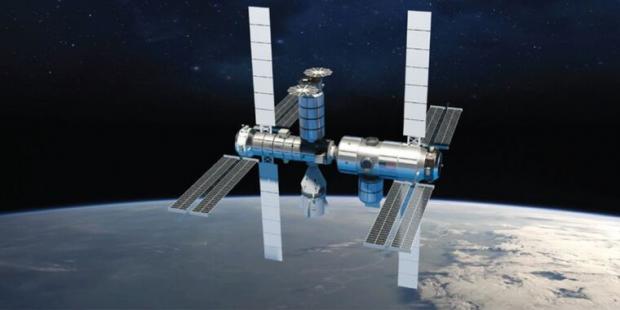
Breaking News
 This One-Person eVTOL Will Soon Offer Bird's-eye Views of Las Vegas
This One-Person eVTOL Will Soon Offer Bird's-eye Views of Las Vegas
 Emergency Update: Steve Slepcevic Reports Live on Hurricane Melissa's Devastation in Jamaica
Emergency Update: Steve Slepcevic Reports Live on Hurricane Melissa's Devastation in Jamaica
 What are they hiding? New evidence in Charlie Kirk's shooting shakes up the case | Redacted
What are they hiding? New evidence in Charlie Kirk's shooting shakes up the case | Redacted
Top Tech News
 Graphene Dream Becomes a Reality as Miracle Material Enters Production for Better Chips, Batteries
Graphene Dream Becomes a Reality as Miracle Material Enters Production for Better Chips, Batteries
 Virtual Fencing May Allow Thousands More Cattle to Be Ranched on Land Rather Than in Barns
Virtual Fencing May Allow Thousands More Cattle to Be Ranched on Land Rather Than in Barns
 Prominent Personalities Sign Letter Seeking Ban On 'Development Of Superintelligence'
Prominent Personalities Sign Letter Seeking Ban On 'Development Of Superintelligence'
 Why 'Mirror Life' Is Causing Some Genetic Scientists To Freak Out
Why 'Mirror Life' Is Causing Some Genetic Scientists To Freak Out
 Retina e-paper promises screens 'visually indistinguishable from reality'
Retina e-paper promises screens 'visually indistinguishable from reality'
 Scientists baffled as interstellar visitor appears to reverse thrust before vanishing behind the sun
Scientists baffled as interstellar visitor appears to reverse thrust before vanishing behind the sun
 Future of Satellite of Direct to Cellphone
Future of Satellite of Direct to Cellphone
 Amazon goes nuclear with new modular reactor plant
Amazon goes nuclear with new modular reactor plant
 China Is Making 800-Mile EV Batteries. Here's Why America Can't Have Them
China Is Making 800-Mile EV Batteries. Here's Why America Can't Have Them
NASA sets sail into a promising but perilous future of private space stations

On Thursday afternoon, NASA announced that it had awarded three different teams, each involving multiple companies, more than $100 million apiece to support the design and early development of private space stations in low Earth orbit.
This represents a big step toward the space agency's plan to maintain a permanent presence in space even after the aging International Space Station, which can probably keep flying through 2028 or 2030, reaches the end of its life. NASA intends to become an "anchor tenant" by sending its astronauts to one or more private stations in orbit starting in the second half of the 2020s.
The total estimated award amount for all three funded Space Act Agreements is $415.6 million. The individual award amounts, with links to each concept, are:
Blue Origin, $130 million, leading a team including Sierra Space, Boeing, and Redwire Space
Nanoracks, $160 million, leading a team including Lockheed Martin and Voyager Space
Northrop Grumman, $125.6 million, leading a team including Dynetics

 Handicapped America
Handicapped America China Innovates: Transforming Sand into Paper
China Innovates: Transforming Sand into Paper

